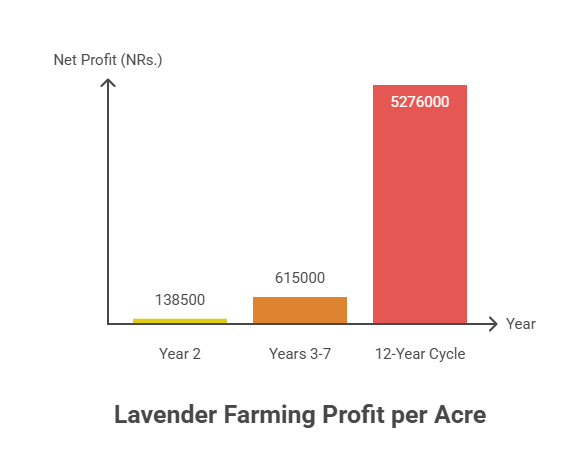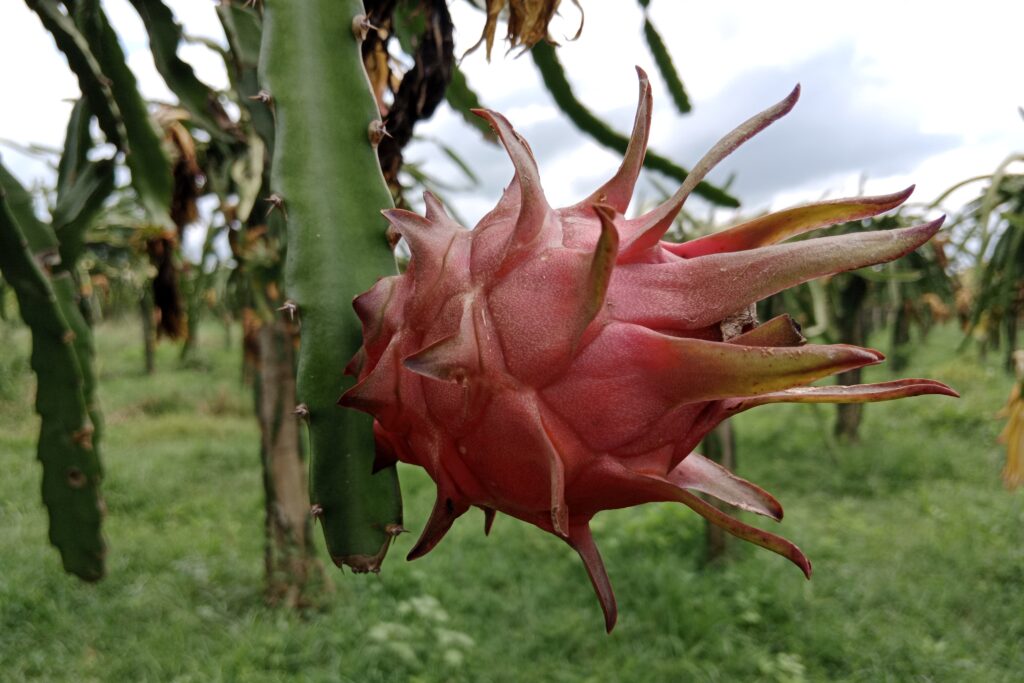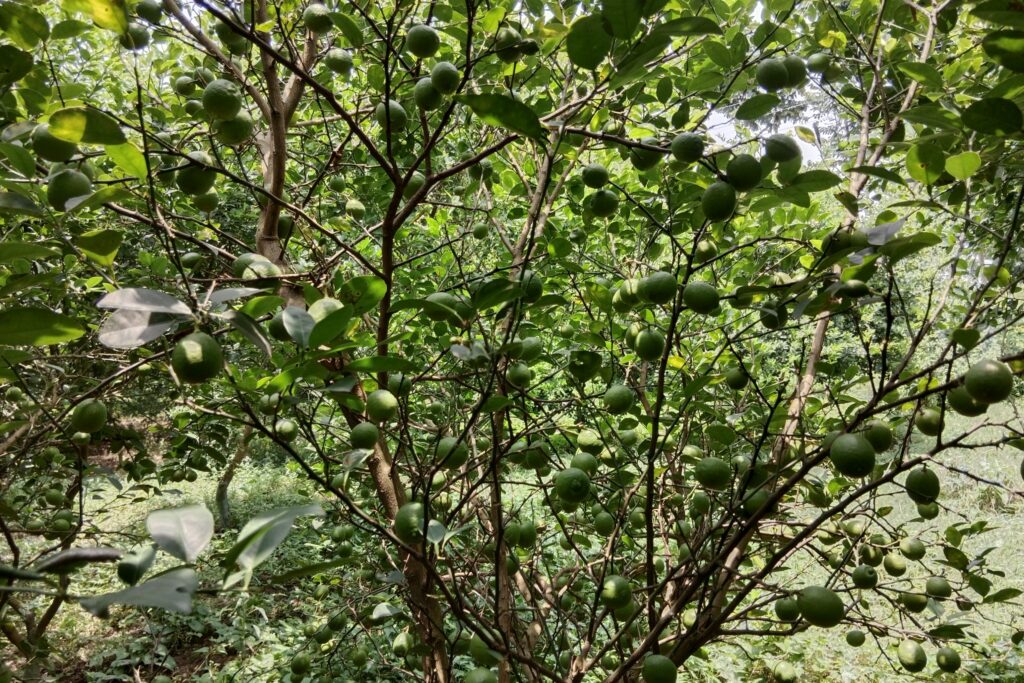Lavender Farming Profit Per Acre
Lavender (Lavandula spp.) is a highly valued aromatic and medicinal plant cultivated worldwide for its fragrant flowers and essential oil, which is widely used in cosmetics, perfumery, pharmaceuticals, and aromatherapy.
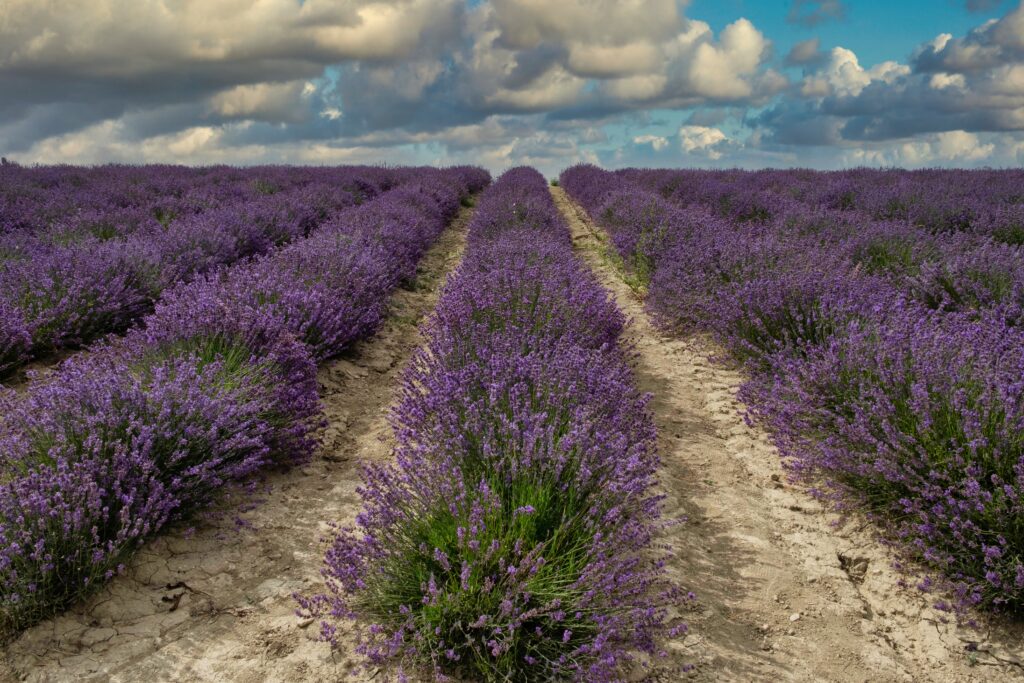
Known for its adaptability to well-drained soils and dry climates, lavender is both drought-tolerant and hardy, making it suitable for sustainable commercial cultivation. Beyond its economic value, the plant also holds ornamental appeal and ecological benefits, contributing to pollinator support and soil health.
Lavender farming profit per acre shows strong long-term potential despite an initial investment loss in the first year, which is fully recovered by the middle of the second year when the cumulative net profit reaches around NRs. 138,500. Over a 12-year plantation cycle, the venture can generate a total net profit exceeding NRs. 52.76 lakh per acre, making it a highly lucrative agribusiness for farmers with a long-term outlook.
The most profitable period is between the 3rd and 7th years, when annual net profits stabilize at about NRs. 6.15 lakh, driven by peak yields and the fact that startup costs have already been covered. However, sustaining this high profitability depends on proper management, as the annual maintenance cost of NRs. 60,000 is a necessary recurring investment to protect yields and ensure consistent returns.
Land Preparation
Proper land preparation is essential for successful lavender farming, as the crop is highly vulnerable to root rot under waterlogged conditions. Deep plowing to a depth of 12–18 inches should be carried out to break up hardpan layers, enhance soil aeration, and improve drainage.
This should be followed by harrowing to reduce soil clods and create a fine, level tilth. Raised beds or broad ridges are strongly recommended in areas with drainage risks, as they allow excess water to move away from the root zone. Additionally, all weeds, stones, and residues from previous crops must be cleared to reduce competition and prevent pest problems.
Soil Type
Lavender grows best in well-drained sandy loam to loamy soils with a neutral to slightly alkaline pH range of 6.5 to 8.0. Good drainage is more critical than soil fertility, as the crop struggles to establish in heavy clay or waterlogged conditions. Prior to planting, a soil test should always be conducted to assess pH and nutrient status. If the soil is too acidic, applying lime may be necessary to raise the pH to a suitable level for optimal growth.
Climatic Requirements
Lavender thrives best in warm, temperate, Mediterranean-type climates where it can receive full sunlight throughout the day. The ideal temperature range for its growth is between 15°C and 30°C (59°F–86°F); while mature plants exhibit some tolerance to drought and cold, young plants require protection from frost.
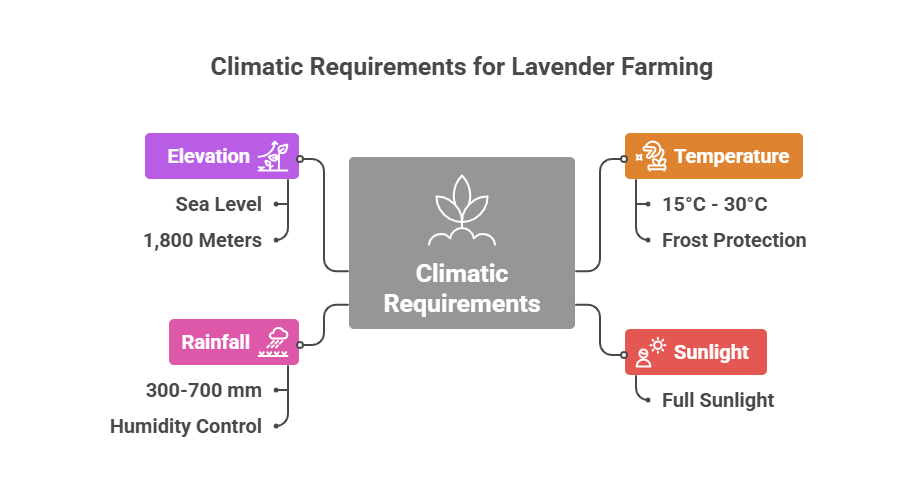
Certain hardy varieties can withstand winter conditions as low as -10°C (14°F), particularly when protected by snow cover. The crop performs well under low to moderate annual rainfall of 300–700 mm, but excessive rainfall and high humidity during the flowering stage can lead to fungal infections and reduce essential oil quality. Depending on the cultivar, lavender can be cultivated successfully from sea level up to elevations of 1,800 meters.
Major Cultivars
| Cultivar Name | Primary Use | Climate Preference | Key Characteristics | Notable Varieties | |
| Lavandula angustifolia (English Lavender) | High-quality essential oil, dried flowers | Cooler climates | Sweet scent, top-quality oil | ‘Munstead’, ‘Hidcote’, ‘Melissa’ | |
| Lavandula x intermedia (Lavandin) | Essential oil (high yield) | Warmer climates (more adaptable) | Strong, camphorous scent, sterile hybrid | ‘Grosso’, ‘Provence’, ‘Super’ | |
| Lavandula stoechas (Spanish Lavender) | Landscaping / Ornamental | – | Distinctive “bunny ear” petals | – | |
Propagation
Lavender is mainly propagated vegetatively to ensure genetic purity and retain the desired traits of specific cultivars. The most reliable and widely used method is through stem cuttings, where semi-hardwood cuttings about 5–6 inches long are taken from healthy, disease-free mother plants.
After removing the lower leaves, the cuttings are treated with a rooting hormone such as IBA and placed in a well-draining propagation medium under mist conditions to encourage rooting.
Although lavender can also be grown from seed, this method is primarily reserved for breeding new varieties, as it results in high genetic variability, inconsistent oil quality, and slower crop establishment, making it unsuitable for commercial cultivation.
Seed Rate per Acre
Lavender is generally difficult to grow from seed, as germination can be inconsistent and the resulting plants may not retain the same desirable traits as their parent plants. Because of this, most commercial lavender growers prefer to use seedlings or propagate new plants from cuttings taken from healthy, established lavender plants.
Propagating through cuttings ensures that the new plants are exact genetic clones of the parent, which guarantees uniformity in flower color, growth habit, and most importantly, consistent levels of essential oil production—an essential factor for commercial cultivation.
Nursery Management
Nursery management involves using a sterile, well-draining medium such as a mix of peat moss, perlite, and vermiculite to promote healthy growth. Cuttings require a humid environment, often maintained under mist, along with bottom heat at 20–25°C to ensure optimal root development within 4–8 weeks. Before transplanting to the field, young plants must be hardened off by gradually reducing water and humidity levels, allowing them to acclimatize and adapt to field conditions.
Planting
Lavender farming is well-suited to regions with relatively cool climates, as the plants are hardy enough to withstand moderate frost and even some snow while still flowering abundantly. However, lavender does not tolerate high humidity, which can negatively affect its growth and oil quality.
To achieve the best results, cultivating lavender on a south-facing slope is highly recommended, as this orientation improves natural drainage, reduces the risk of waterlogging, and enhances exposure to sunlight, ultimately leading to increased essential oil production.
a). Planting Season
The ideal planting season for lavender is in spring (March to May) after the last frost has passed, ensuring young plants are not damaged by cold. In regions with milder, frost-free climates, planting can also be done in autumn (September to November), which allows the roots to establish firmly during the winter months and promotes healthier growth in the following season.
b). Spacing
| Purpose | Row Spacing | Plant Spacing | Reason / Note |
| Oil Production | 120 cm | 90 cm | Allows access for machinery used in harvesting and weed control. |
| Ornamental Use | 60 cm | 60 cm | Creates a dense, continuous hedge. |
c). Pit Preparation
Dig pits of approximately 30 cm x 30 cm x 30 cm.
d). Planting Method
Set the seedling in the middle of the pit, then cover it with soil and press lightly to eliminate air gaps. After planting, water the seedling right away.
e). Number of Plants per Acre
With the above spacing of 120cm x 90cm, you can accommodate approximately 3,747 plants per acre.
Intercropping
Intercropping in lavender fields is generally practical only during the first year of establishment, before the plants develop a dense canopy that shades the ground. During this early stage, farmers can grow fast-growing, low-growing, and non-competitive crops such as certain herbs or shallow-rooted vegetables alongside lavender, making efficient use of land and generating additional income.
However, by the second year, the lavender plants typically expand and create a dense canopy, leaving little space and light for intercrops to thrive, which makes intercropping no longer feasible.
Irrigation
Irrigation in lavender farming should be carefully managed to match the plant’s growth stage. Young plants need regular watering, typically twice a week, to help establish strong roots, while mature plants become highly drought-tolerant and can suffer from overwatering, which is one of the main causes of crop failure.
Drip irrigation is recommended for efficiency and to keep the foliage dry, reducing the risk of disease. Watering should be done deeply but infrequently, allowing the soil to dry between sessions, with particular attention during bud formation; however, irrigation should be stopped before harvest to enhance essential oil concentration.
Fertilizer and Manure
Lavender thrives in soils with moderate fertility, as excessive nitrogen promotes soft, leafy growth that diminishes flower and oil production. To establish a healthy foundation, a basal dose of 15-20 tonnes of well-decomposed Farmyard Manure (FYM) or compost per acre should be incorporated into the soil during the initial land preparation.
For annual maintenance, a light application of a balanced, slow-release fertilizer, such as an N:P:K 10:10:10 blend, or a fertilizer richer in phosphorus and potassium is usually sufficient when applied in early spring; however, this should always be based on the specific recommendations of a soil test to avoid over-fertilization.
Weed Control
Weed control is a crucial aspect of lavender farming, particularly during the early stages of plant growth when young lavender plants are most vulnerable to competition. Applying a 2–3 inch layer of gravel, sand, or organic mulch is highly effective, as it not only suppresses weeds but also conserves soil moisture and reflects heat to support healthy plant development.
Manual weeding is often necessary during the first year, though care must be taken to avoid disturbing the shallow root system. For larger fields, mechanical cultivation using tractors fitted with finger weeders can efficiently manage weeds between rows.
Additionally, the use of geotextile fabric offers a commercial solution for complete and long-term weed suppression, helping maintain a clean and productive lavender field.
Interculture Operation
Pruning is a vital practice in lavender farming to maintain plant shape, stimulate fresh growth, and prevent the development of a woody, leggy center. In the first year, plants should be lightly pruned after their initial flowering to promote bushier growth, taking care not to cut into old wood.
Thereafter, annual pruning is recommended, usually after the main harvest or in early spring, by trimming back about one-third of the plant’s growth while ensuring some green foliage remains, as cutting entirely to the woody stem can damage the plant.
Over time, if lavender plants become excessively woody and fail to regenerate properly, they may need to be replaced to sustain healthy and productive growth.
Flowering and Fruit Management
Flowering
Lavender typically flowers from late spring through summer, and this stage is the most critical in its growth cycle. The period between bud formation and harvest is especially important, as it directly influences the accumulation of essential oils within the flower spikes. Proper care and timely harvesting during this phase ensure maximum oil yield and high-quality flowers.
Fruit
Although lavender produces small nutlets as its fruit, these have no commercial importance. The economic value of lavender lies entirely in its flower spikes, which are harvested for essential oil extraction, dried flowers, and other value-added products. Consequently, fruit production is not a focus in lavender farming, and management practices are directed toward optimizing flower quality and yield.
Pest and Disease Management
Insect pest infestation in lavender is generally minimal, as the plant’s natural aromatic oils act as a deterrent; however, farmers should still remain vigilant for certain pests and diseases that can occasionally pose a threat. Common issues include
Common Pests
Spittlebugs
These insects are primarily a cosmetic nuisance, as their foamy, white “spittle” masses protect them while they feed on plant sap. For light infestations, they can often be effectively dislodged and controlled by spraying plants with a strong jet of water.
If their population becomes severe and requires intervention, an application of a natural, plant-derived insecticide such as pyrethrin (e.g., 20-30 ml per 10 liters of water) can be used. As a stronger chemical alternative, lambda-cyhalothrin (e.g., 1.5 ml per 10 liters of water) is also effective.
Always ensure thorough coverage of the plant, especially the stems and leaf axils where the spittle masses are found.
Aphids
These small, soft-bodied insects cluster on new, tender growth, sucking sap and potentially spreading plant viruses. They are often kept in check by natural predators like ladybugs and lacewings.
For organic control, insecticidal soap sprays (following the manufacturer’s label, typically 15-30 ml per liter of water) or neem oil (e.g., 3-5 ml per liter of water) are very effective.
In cases of heavy infestation, a systemic insecticide such as imidacloprid (apply as a soil drench according to label instructions, as dosage varies by formulation) can provide longer-lasting control.
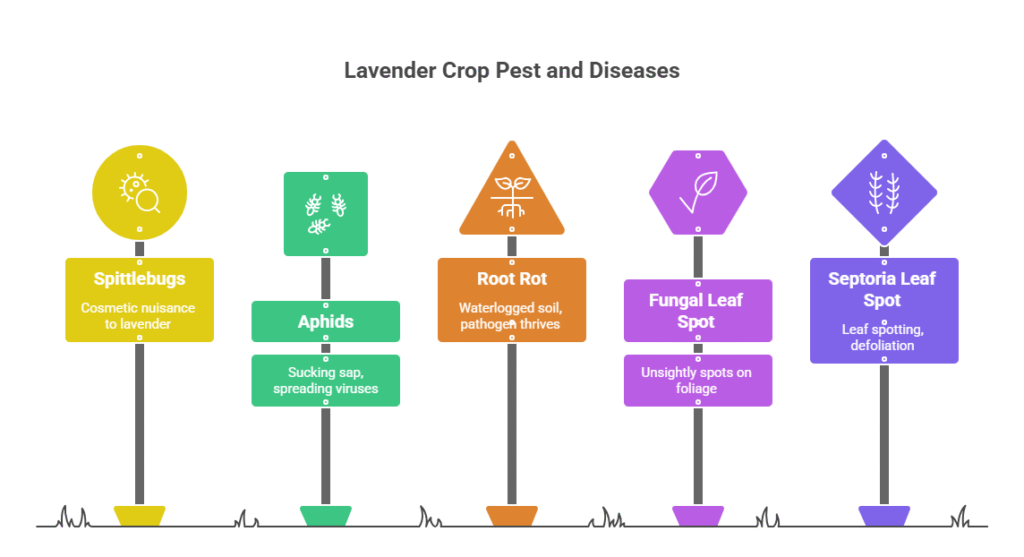
Common Diseases
Root Rot (Phytophthora spp.)
This is the most serious disease affecting lavender, caused by waterlogged soil that allows the Phytophthora pathogen to thrive. Prevention is the only effective strategy, as the disease is often fatal once established.
The key is to ensure perfect drainage by planting in raised beds or amending the soil with gravel or sand and to avoid overwatering. There are no reliable chemical cures, but as a preventative soil drench in high-risk areas, metalaxyl or mefenoxam can be used according to the product’s label instructions (typically 15-30 ml per 10 liters of water).
Fungal Leaf Spot
This disease manifests as unsightly brown or black spots on the foliage. Management focuses on cultural practices to create an unfavorable environment for the fungus. This includes improving air circulation by proper plant spacing, watering at the base to keep leaves dry, and promptly removing and destroying affected plant parts.
If chemical control is necessary, apply a copper-based fungicide like copper hydroxide (e.g., 15-30 ml per 10 liters of water) or a broad-spectrum product like chlorothalonil (e.g., 15-20 ml per 10 liters of water) at the first sign of symptoms, repeating as directed on the label.
Septoria Leaf Spot
Caused by the Septoria fungus, this disease also results in leaf spotting and can defoliate a plant if severe. Along with cultural controls like improving air circulation and removing infected debris, targeted fungicide application may be required.
For organic treatment, a sulfur-based fungicide (e.g., 2 tablespoons per 4 liters of water) can be effective. For more persistent cases, use a systemic fungicide containing myclobutanil (e.g., 5-10 ml per 10 liters of water) or azoxystrobin (e.g., 10-15 ml per 10 liters of water), ensuring thorough coverage of all leaf surfaces.
Harvesting
Harvesting lavender requires precise timing to ensure maximum oil yield and quality. The ideal stage is when about 50–100% of the flowers on each spike are open but before they start to wither, typically carried out in the early morning after the dew has evaporated.
For small-scale, high-quality production, harvesting is usually done by hand, while large-scale commercial operations often use mechanical harvesters. In both cases, the flower stems should be cut long, just above the leaf growth, to promote regrowth and maintain plant health.
Yield
| Aspect | Details |
| Fresh Flower Yield | 4,000 – 6,000 kg per acre per year (from a well-established plantation, 2–3 years old) |
| Dry Flower Yield | Drying ratio of 3:1 (fresh:dry), giving 1,300 – 2,000 kg per acre |
| Essential Oil Yield | 0.5% – 2.0% of fresh weight, equal to 15 – 40 kg of essential oil per acre |
| Plant Life | Commercial plantations remain productive for 8 – 12 years with proper care |
Cost of Investment per Acre for Lavendar Farming
| S.N. | Categories | Cost (NRs) |
| 1 | Land Preparation | 15,000 |
| 2 | Planting Material (Stem Cutting) | 5,000 |
| 3 | Planting | 3,000 |
| 4 | Fertilizers and Manure | 9,000 |
| 5 | Irrigation | 15,000 |
| 6 | Weed Control | 7,000 |
| 7 | Pest & Disease Control | 8,000 |
| 8 | Harvesting | 7,000 |
| 9 | Miscellaneous Costs | 10,000 |
| Total Initial Investment | 79,000 |
Annual Maintenance Cost per Acre for Lavendar Farming
The annual maintenance cost for lavender farming from the 2nd year to the 12th year is estimated at NRs. 60,000 per acre. This recurring expense covers essential activities such as irrigation, fertilization, weed management, pest and disease control, labor for intercultural operations, and other routine field practices required to sustain healthy plant growth and maximize flower and oil yield.
Proper maintenance during these years is crucial, as it ensures consistent productivity and prolongs the commercial life of the plantation, making the investment profitable over the long term.
Income per Acre from Lavendar Farming
| Year | Yield (Fresh Kg) | Market Price (NRs/Kg) | Total Income (NRs) |
| 1 | 750 | 150 | 112,500 |
| 2 | 1,500 | 150 | 225,000 |
| 3-7 (5 years) | 4,500/yr | 150 | 675,000/yr |
| 8-10 (3 years) | 3,750/yr | 150 | 562,500/yr |
| 11-12 (2 years) | 2,250/yr | 150 | 337,500/yr |
- Analysis of Lavendar Farming Profit Per Acre
| Year(s) | Income (NRs.) | Cost (NRs.) | Profit/Loss (NRs.) | Remarks |
| 1st Year | 112,500 | 79,000 + 60,000 = 139,000 | -26,500 (Loss) | Establishment phase |
| 2nd Year | 225,000 | 60,000 | +165,000 | First profitable year |
| 3rd – 7th Year | 675,000/year | 60,000/year | +615,000/year | Peak profitability |
| 8th – 10th Year | 562,500/year | 60,000/year | +502,500/year | Slight decline |
| 11th – 12th Year | 337,500/year | 60,000/year | +277,500/year | Lower productivity |
The initial investment loss from the first year of lavender farming is fully recovered by the middle of the second year, as the cumulative net profit becomes positive at approximately NRs. 138,500.
Furthermore, the venture demonstrates highly profitable long-term potential, with a projected total net profit exceeding NRs. 52.76 lakh per acre over a 12-year lifespan, underscoring its viability as a lucrative agribusiness for those with a long-term perspective.
The peak earning years occur from years 3 through 7, delivering a steady annual net profit of around NRs. 6.15 lakh, a period of maximum profitability driven by high yields and the fact that the initial startup costs have already been covered.
Crucially, maintaining this high level of profitability is dependent on diligent management, as the annual maintenance cost of NRs. 60,000 is a significant recurring expense that is essential for protecting the high yields that generate these substantial returns.
Sources
Food and Agriculture Organization (FAO)
University of California Agriculture & Natural Resources (UC ANR)
European Plant Protection Organization (EPPO)
Punjab Agricultural University (PAU)
Tamil Nadu Agriculture University (TNAU) – Agritech portal
Indian Council of Agricultural Research (ICAR)
Nepal Agricultural Research Council (NARC)
U.S. Department of Agriculture (USDA).
Ministry of Agriculture and Livestock Development (Nepal)
Disclaimer: This crop farming profits assume optimal conditions. Actual results may vary depending on climate, market prices, and farm management practices.

